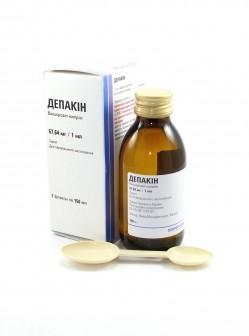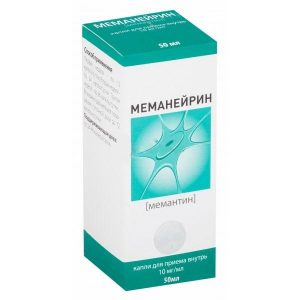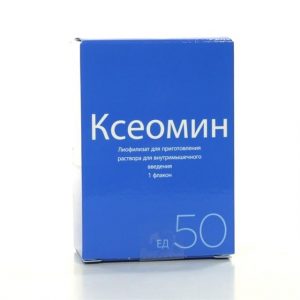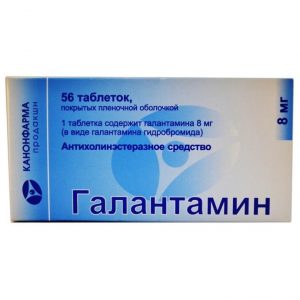Description
Latin name
Depakine
Packaging
150 ml – dark glass bottles (1) complete with a dosage spoon – packs of cardboard.
Pharmacological action
Antiepileptic. It is believed that the mechanism of action is associated with an increase in the content of GABA in the central nervous system, which is due to the inhibition of GABA transaminase, as well as a decrease in the reuptake of GABA in brain tissues. This, apparently, leads to a decrease in excitability and convulsive readiness of the motor zones of the brain. Helps to improve the mental state and mood of patients.
Pharmacokinetics
Valproic acid is rapidly and almost completely absorbed from the gastrointestinal tract, oral bioavailability is about 93%. Eating does not affect the degree of absorption. Cmax in blood plasma is reached after 1-3 hours. The therapeutic concentration of valproic acid in blood plasma is 50-100 mg / L.
Css is achieved on days 2-4 of treatment, depending on the intervals between doses. Plasma protein binding is 80-95%. Concentration levels in cerebrospinal fluid correlate with the size of the fraction unbound with proteins. Valproic acid crosses the placental barrier, excreted in breast milk.
Metabolized by glucuronidation and oxidation in the liver.
Valproic acid (1-3%) and its metabolites are excreted by the kidneys. T1 / 2 in monotherapy and in healthy volunteers is 8-20 hours.
When combined with other drugs, T1 / 2 may be 6 8 hours due to the induction of metabolic enzymes
Indications
Epileptic seizures: generalized, focal (focal, partial) with simple and complex symptoms, small. Convulsive syndrome with organic brain diseases. Behavioral Disorders Associated with Epilepsy. Manic-depressive psychosis with a bipolar course, not amenable to treatment with lithium preparations or other drugs. Febrile cramps in children, children’s tick.
Contraindications
Impaired liver and pancreas, hemorrhagic diathesis, acute and chronic hepatitis, porphyria hypersensitivity to valproic acid.
Use in cases of impaired liver function
Contraindicated in cases of impaired liver function, acute and chronic hepatitis. Used with caution in case of liver diseases in history.
Keep in mind that the risk of developing side effects from the liver is increased during combined anticonvulsant therapy. During treatment, it is necessary to regularly monitor liver function.
Use for impaired renal function
Use with caution in case of impaired renal function.
Use in children
Children are at increased risk of developing severe or life-threatening hepatotoxic effects. In patients under the age of 2 years and in children receiving combination therapy, the risk is even higher, but with increasing age it decreases
Use during pregnancy and lactation
Use during pregnancy is not recommended. It should be borne in mind that valproic acid can cause various congenital malformations, especially spina bifida.
Valproic acid is excreted in breast milk. There are reports that the concentration of valproate in breast milk was 1-10% of the concentration in the blood plasma of the mother. During lactation, use is possible in cases of emergency.
Women of childbearing age are advised to use reliable methods of contraception during the treatment period.
Composition of
Syrup 1 ml
sodium valproate 57.64 mg
Excipients: methyl parahydroxybenzoate, propyl parahydroxybenzoate, sucrose 67%, sorbitol 70% (crystallizable), glycerol, hydrochloric acid, hydrochloric acid, hydrochloric acid, hydrochloride, hydrochloride, hydrochloride, hydrochloride, hydrochloride, hydrochloric acid 7.7), purified water.
Dosage and administration
Individual. For oral administration in adults and children weighing more than 25 kg, the initial dose is 10-15 mg / kg / day. Then the dose is gradually increased by 200 mg / day with an interval of 3-4 days until the clinical effect is achieved. The average daily dose is 20-30 mg / kg. For children weighing less than 25 kg and newborns, the average daily dose is 20-30 mg / kg.
Frequency of administration – 2-3 times / day with meals.
IV (in the form of sodium valproate) is administered in a dose of 400-800 mg or drip at the rate of 25 mg / kg for 24, 36 and 48 hours. If necessary, the simultaneous use of inside and / in the first injection is carried out by intravenous infusion in a dose of 0.5-1 mg / kg / h 4-6 hours after the last oral administration.
Maximum doses: when taken orally for adults and children weighing more than 25 kg – 50 mg / kg / day. The use of a dose of more than 50 mg / kg / day is possible provided that the concentration of valproate in the blood plasma is controlled. With a plasma concentration of more than 200 mg / l, the dose of valproic acid should be reduced.
Side effects of the
From the central nervous system: possible trembling of the hands or hands rarely – changes in behavior, mood or mental state, diplopia, nystagmus, spots in front of the eyes, impaired coordination of movements, dizziness, drowsiness, headache, unusual agitation, motor anxiety or irritability .
From the digestive system: possible mild cramping in the abdomen or stomach, loss of appetite, diarrhea, digestive disorders, nausea, vomiting, rarely – constipation, pancreatitis.
From the blood coagulation system: thrombocytopenia, prolonged bleeding time.
Metabolism: An unusual decrease or increase in body weight.
On the part of gynecological status: menstrual irregularities.
Dermatological reactions: alopecia.
Allergic reactions: skin rash.
Drug Interaction
With the simultaneous use of neuroleptics, antidepressants, MAO inhibitors, benzodiazepine derivatives, ethanol, the CNS has a depressing effect.
When hepatotoxic agents are used at the same time, hepatotoxic effects may increase.
When used simultaneously, the effects of antiplatelet agents (including acetylsalicylic acid) and anticoagulants are enhanced.
Concomitant use increases the concentration of zidovudine in blood plasma, which increases its toxicity.
When used with carbamazepine, the concentration of valproic acid in the blood plasma decreases due to an increase in the rate of metabolism due to the induction of microsomal liver enzymes under the influence of carbamazepine. Valproic acid potentiates the toxic effect of carbamazepine.
When used simultaneously, lamotrigine metabolism slows and T1 / 2 increases.
When used with mefloquine, the metabolism of valproic acid in blood plasma is increased and the risk of convulsions is increased.
At simultaneous use with meropenem it is possible to decrease the concentration of valproic acid in blood plasma with primidone – to increase the concentration of primidone in blood plasma with salicylates – it is possible to increase the effects of valproic acid due to its displacement by salicylates from the connection with plasma proteins.
When co-administered with felbamate, the concentration of valproic acid in the blood plasma increases, which is accompanied by manifestations of toxic action (nausea, drowsiness, headache, decreased platelet count, cognitive impairment).
When co-administered with phenytoin for the first few weeks, the total concentration of phenytoin in the blood plasma may decrease due to its displacement from the sites of binding to plasma proteins by sodium valproate, induction of microsomal enzymes of the liver, and acceleration of phenytoin metabolism. Further, the inhibition of phenytoin metabolism by valproate occurs and, consequently, an increase in the concentration of phenytoin in the blood plasma. Phenytoin decreases the concentration of valproate in the blood plasma, probably by increasing its metabolism in the liver. It is believed that phenytoin, as an inducer of hepatic enzymes, may also increase the formation of a secondary but hepatotoxic metabolite of valproic acid.
With simultaneous use, valproic acid displaces phenobarbital from plasma proteins, as a result, its concentration in the blood plasma increases. Phenobarbital increases the rate of valproic acid metabolism, which leads to a decrease in its plasma concentration.
There are reports of increased effects of fluvoxamine and fluoxetine when co-administered with valproic acid. When co-administered with fluoxetine, some patients had an increase or decrease in the concentration of valproic acid in the blood plasma.
With concomitant use of cimetidine, erythromycin may increase the concentration of valproic acid in plasma by reducing its metabolism in the liver.
overdose
Symptoms: clinical manifestations of acute massive overdose usually occur as a coma with hypotension of the muscles, hyporeflexia, miosis, respiratory depression, metabolic acidosis. Cases of intracranial hypertension associated with brain edema have been described.
Treatment: Emergency care for an overdose at the hospital should be as follows: gastric lavage, which is effective for 10-12 hours after administration of the drug, monitoring the condition of the cardiovascular and respiratory system and maintaining effective diuresis. In very severe cases, dialysis is performed.
Usually an overdose prognosis is favorable, however, several deaths have been reported.
Storage conditions
Store at a temperature not exceeding 25 ° C, protecting from direct sunlight.
Keep out of the reach of children.
Expiration
3 years.
Do not use after the expiry date.
Active ingredient
Valproic acid yslota
Pharmacy terms
Prescription
dosage form
dosage form
oral solution
Sanofi-Aventis, France




